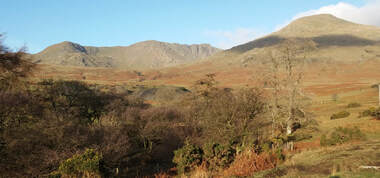 Dow Crag, The Old Man of Coniston. Slate spoil heaps centre
Dow Crag, The Old Man of Coniston. Slate spoil heaps centre A low winter sun illuminates the landscape in a distinctive way, with a different emphasis. Dow Crag and the Old Man are etched in sunlight and shadow, the architecture of the fells revealed.
Green slate and black slate: slate has been quarried here since the 13th century. We talked of how noisy it would have been, but we were thinking of industrial-scale quarrying, not of manual labourers back in the 13th century. Those slate field-boundaries speak of the Coniston Fells and tell of the history of quarrying. Lichens are slow-growing so a dense pattern indicates slate-fencing has been in situ for some time. At the Church of St Michael And All Angels, Hawkshead, the churchyard itself is bounded with a slate fence, as are the pastures beyond it. Stock-proof slate fencing characterises this Lake District location.
Thanks to John Edmondson for leading a walk full of interest, and for sharing with us something of the history of this landscape. His walk Torver and Bowmanstead, can be found in The Westmorland Gazette.
I have focused on landscape from the first part of his route: Torver Beck and Walna Scar Road.
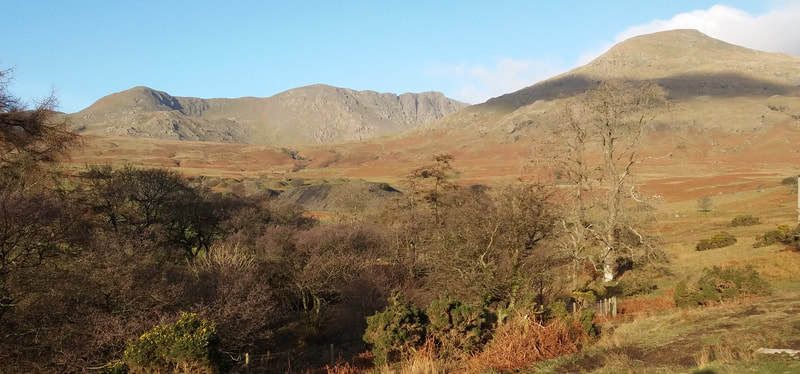


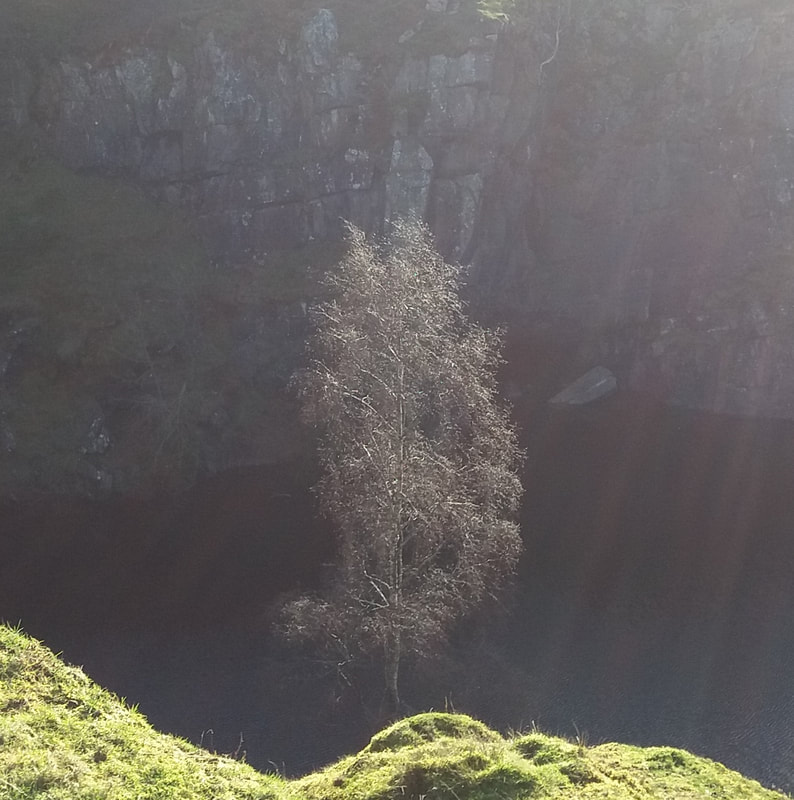
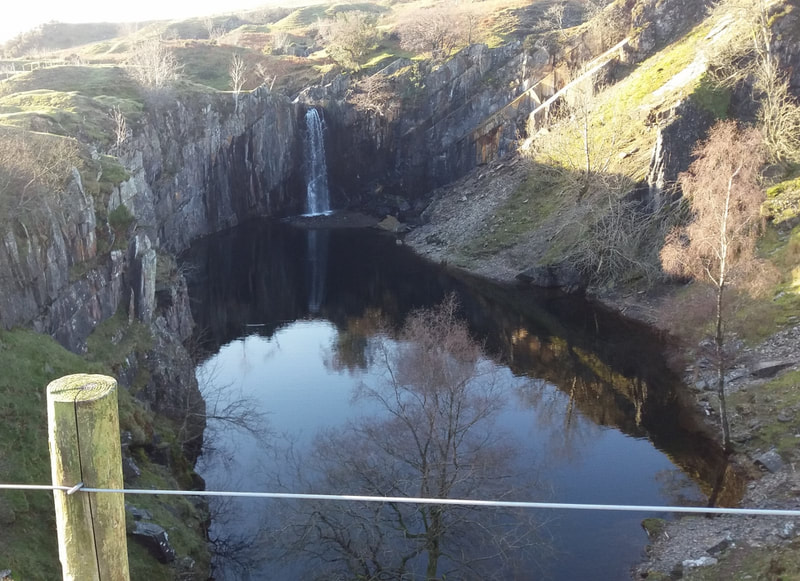
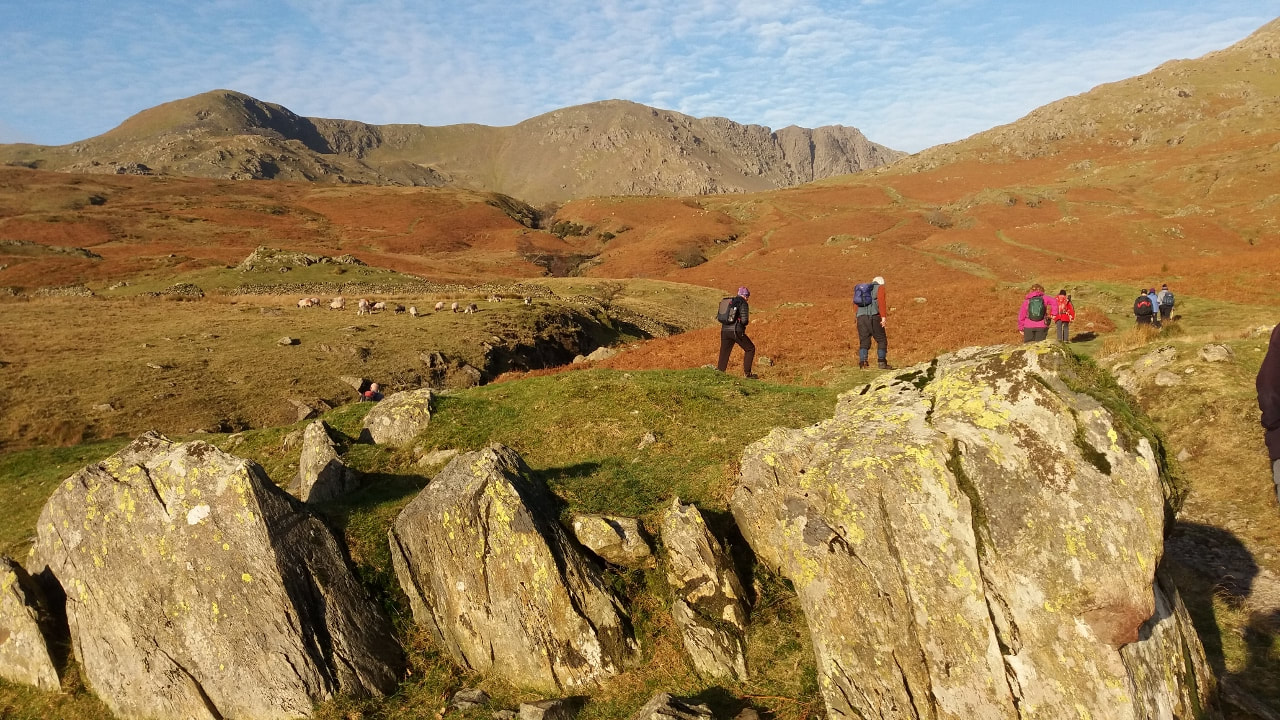
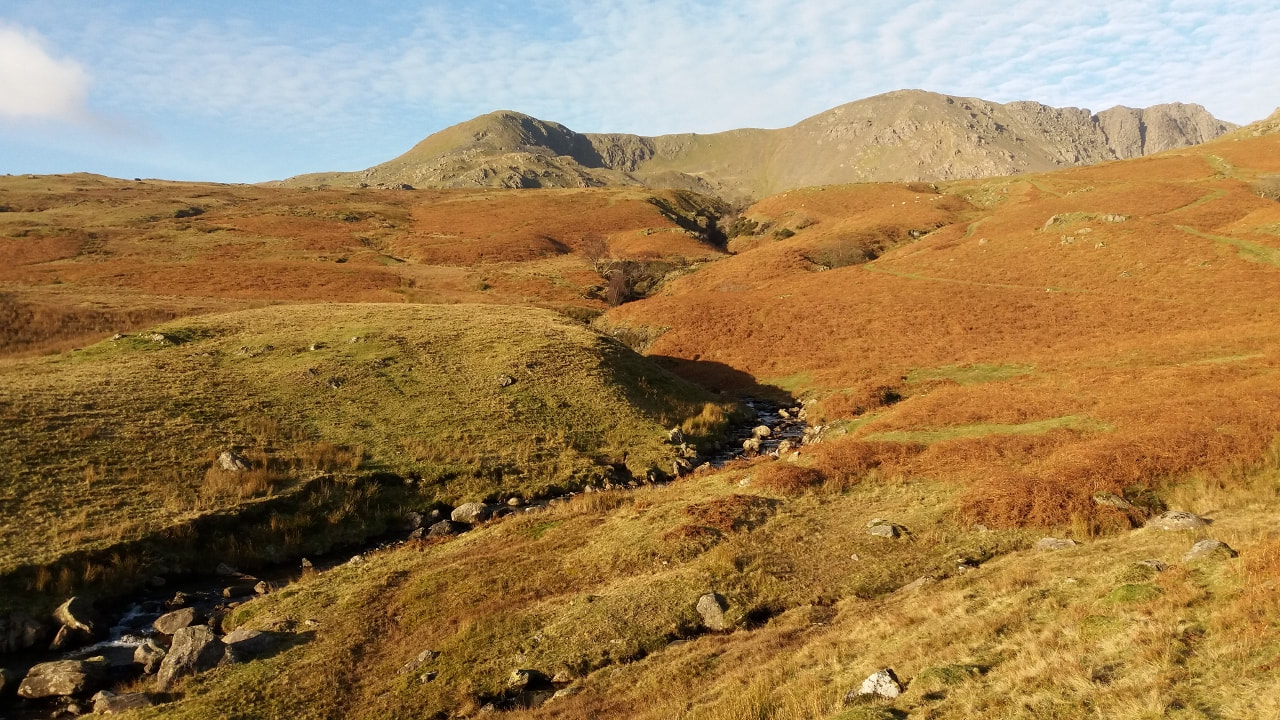
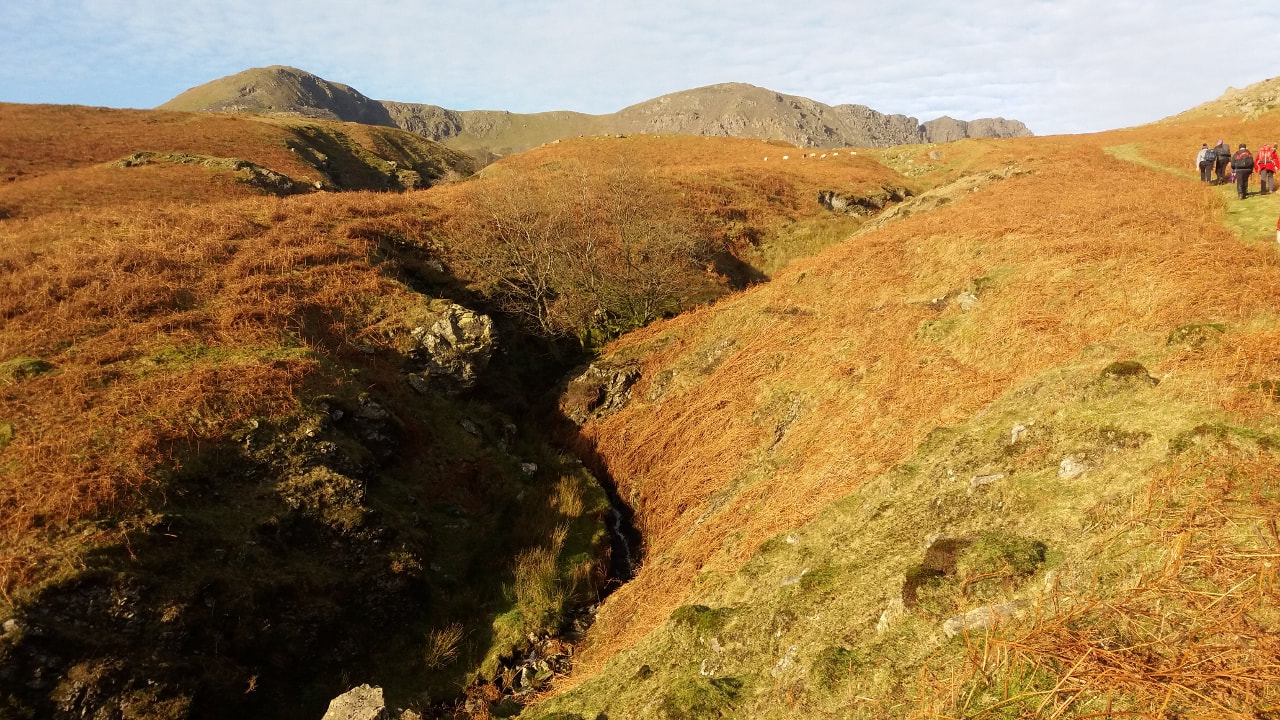
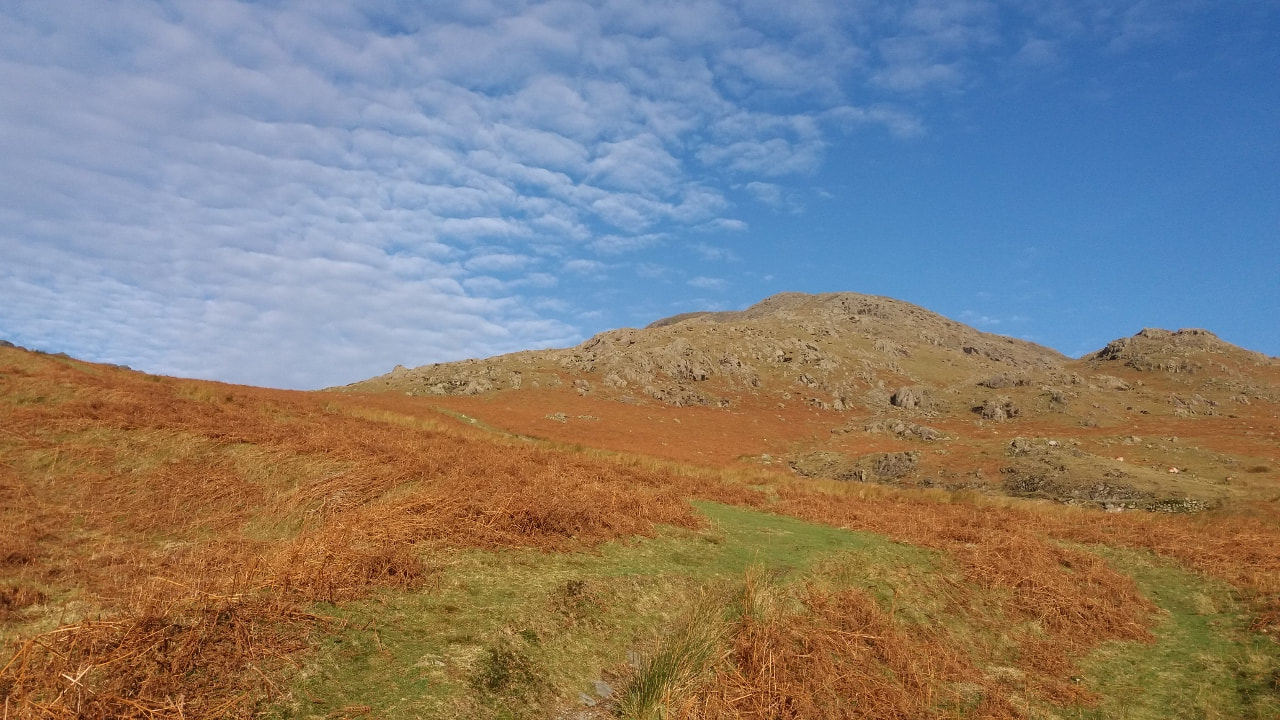
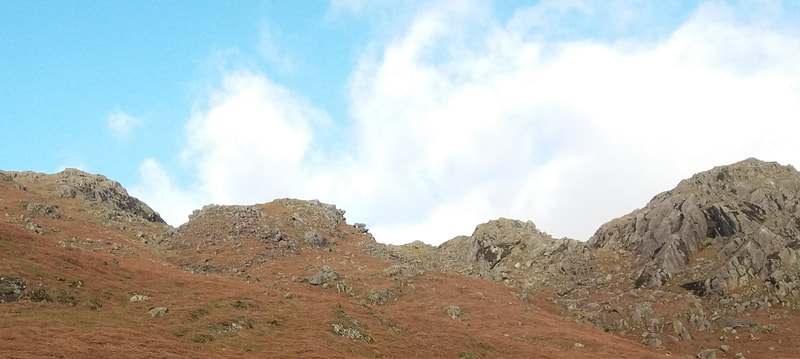

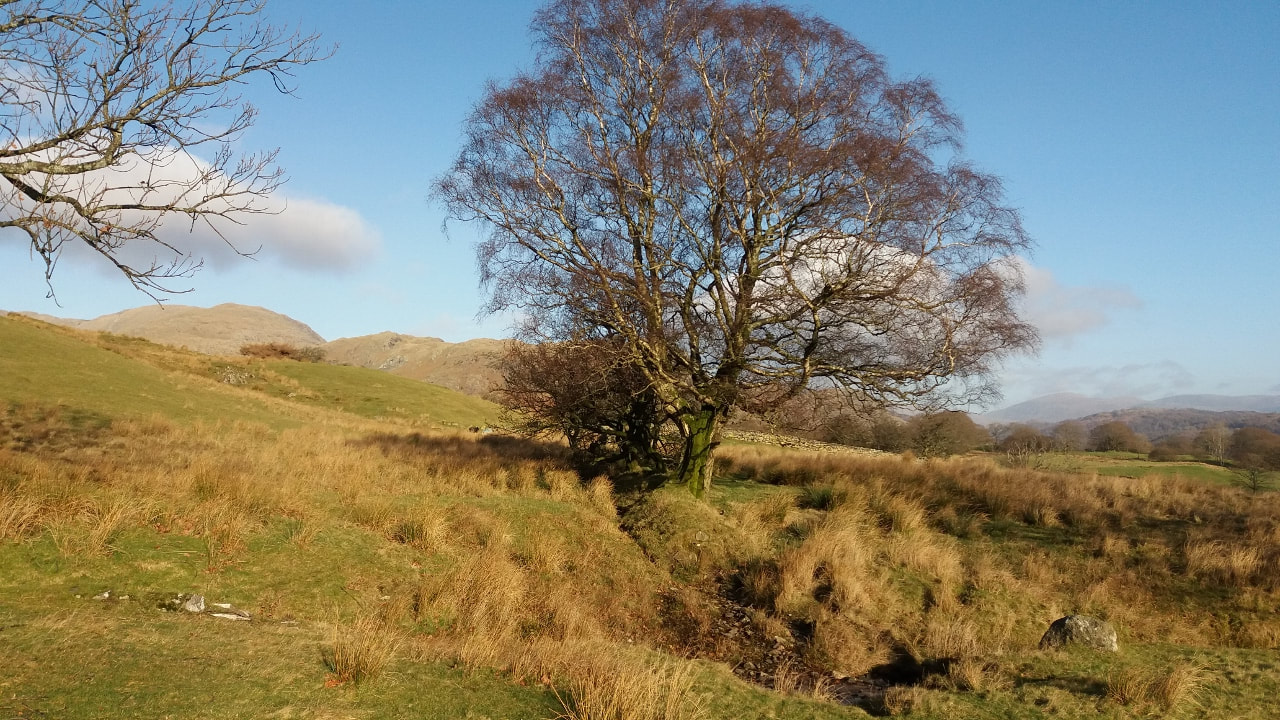
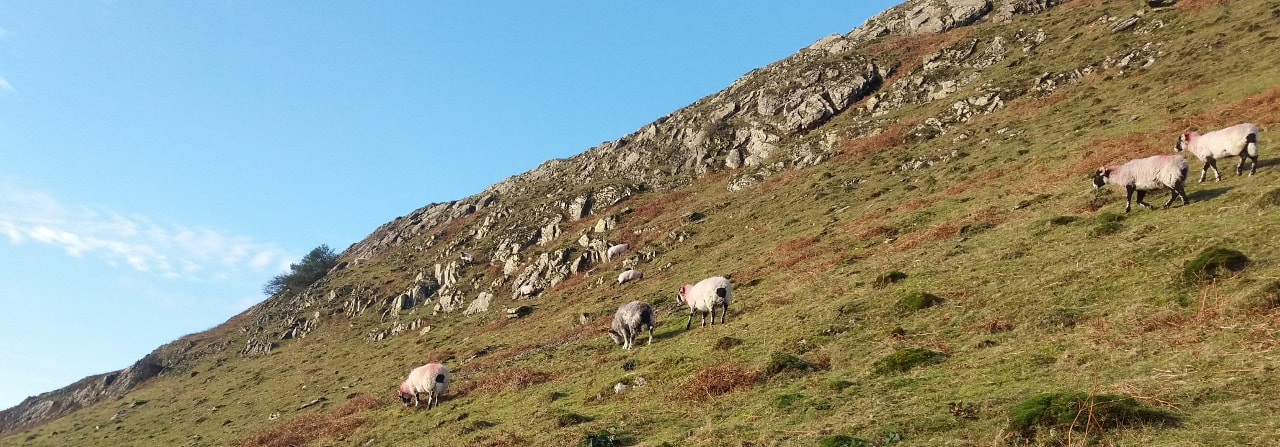
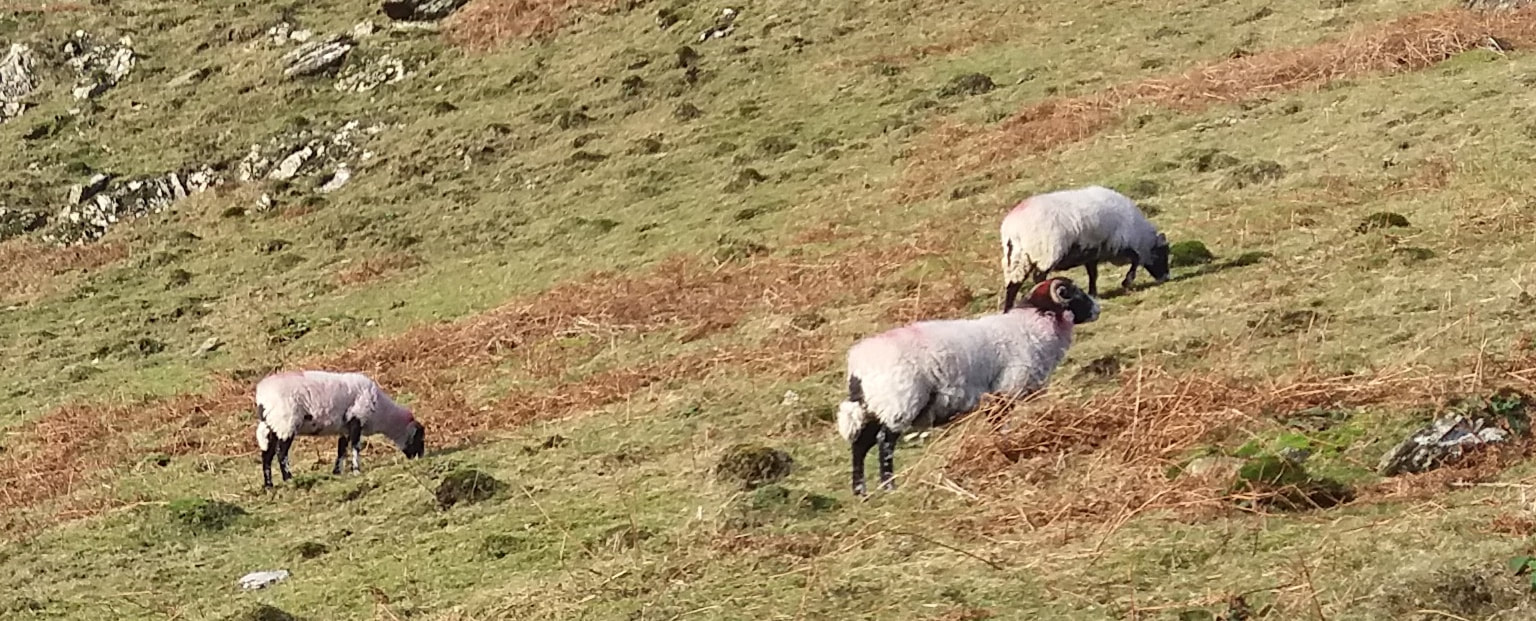
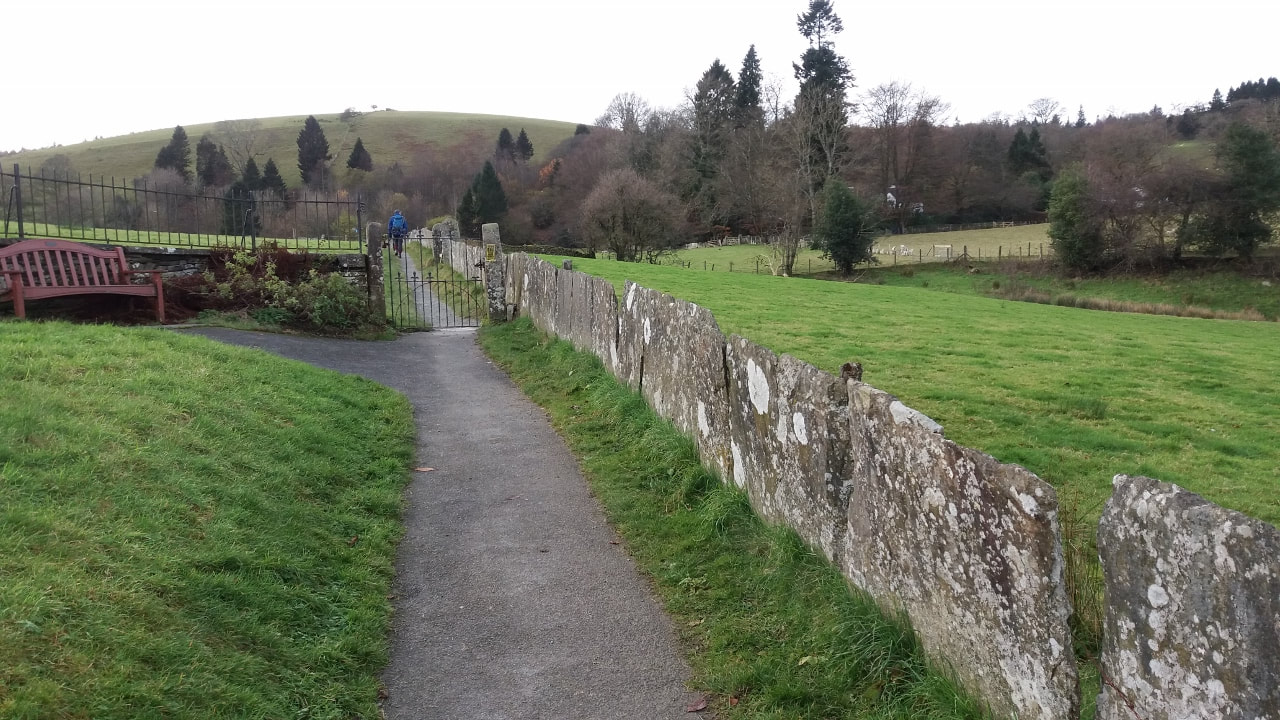

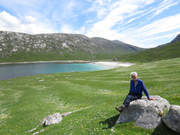
 RSS Feed
RSS Feed